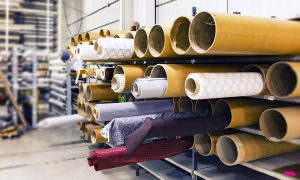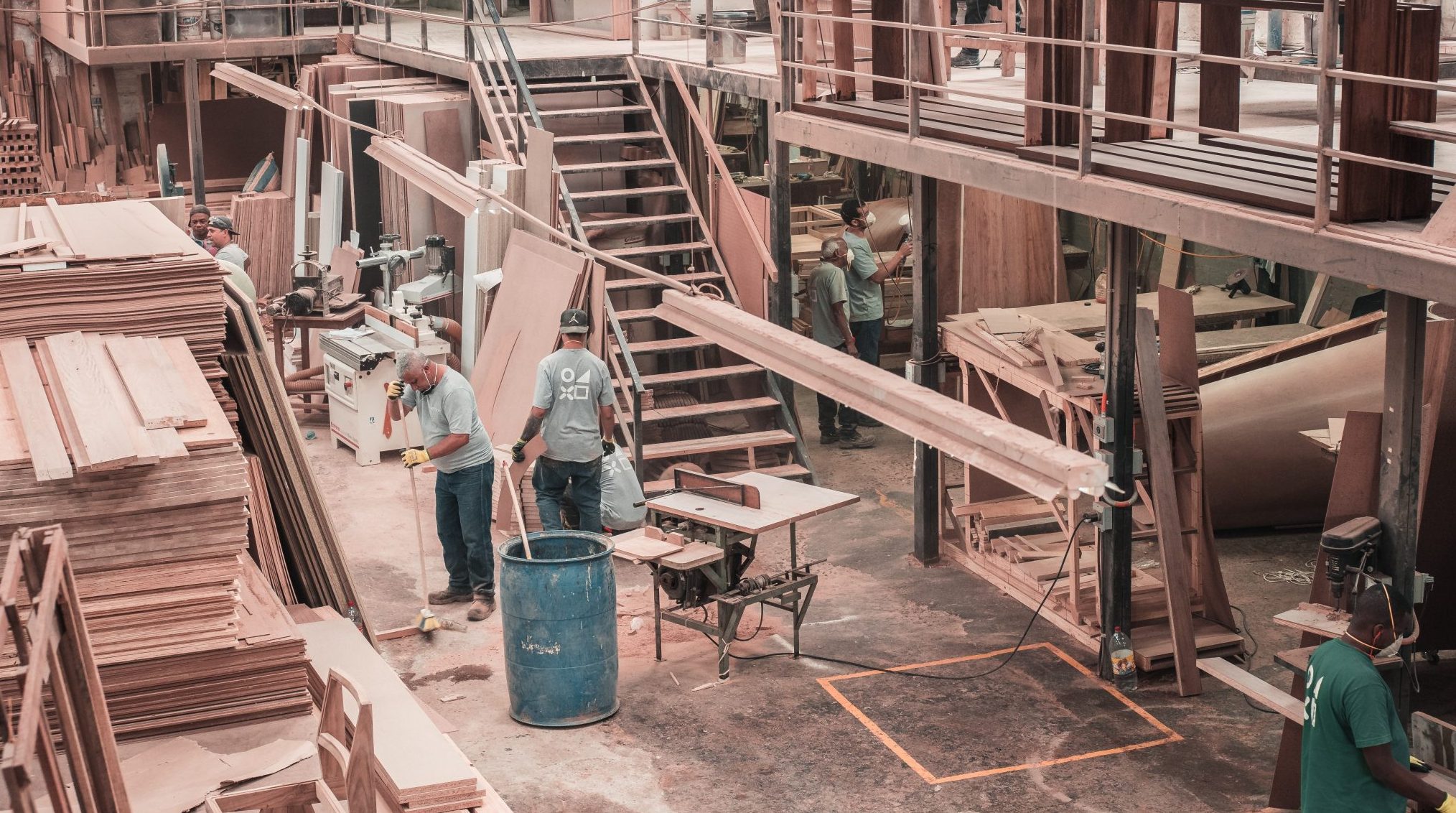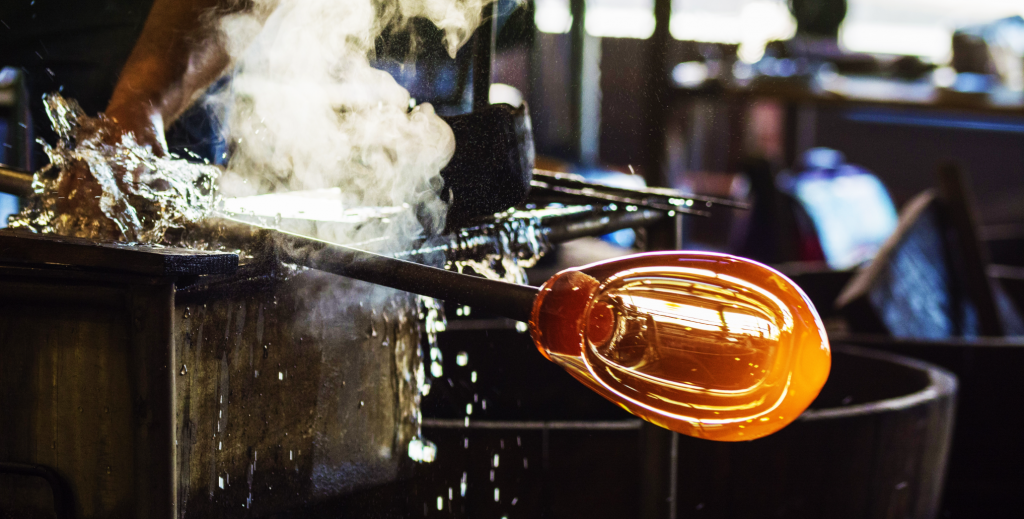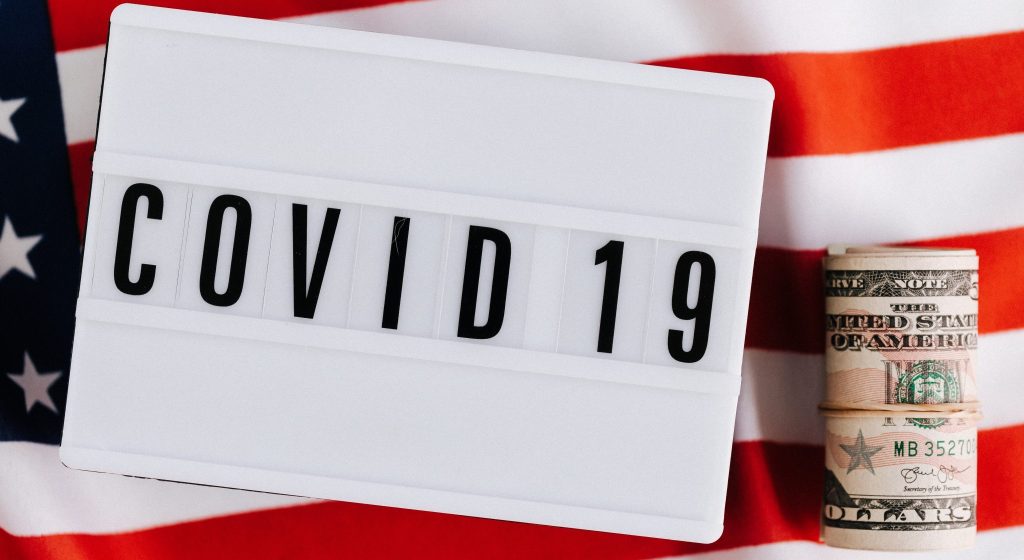“Designed in California. Assembled in China.”
That phrase on the back of every iPhone shows just how integrated the world has become. An iconic American brand designed locally produced 11,500 kilometers (7,000 miles) away and shipped back to the United States is a testament to how the world has become a “small village.”
However, the outbreak of COVID-19 and subsequent lockdowns, particularly in China, has raised alarms — nowhere more so than in Egypt, where the CBE says Chinese goods accounted for 9.4 percent of all imports last fiscal year. That is making local experts and government officials look to increase domestic manufacturing investments to rely less on imported goods and supply.
 To reduce dependence on other countries, Prime Minister Mostafa Madbouly met with business leaders and investors in April to expedite plans to boost domestic manufacturing. Madbouly urged attendees to “participate in the government’s vision in the coming phase,” emphasizing that production in Egypt is vital for the country’s economic future in a post-COVID-19 world. “It is a golden opportunity for local industry,” he said.
To reduce dependence on other countries, Prime Minister Mostafa Madbouly met with business leaders and investors in April to expedite plans to boost domestic manufacturing. Madbouly urged attendees to “participate in the government’s vision in the coming phase,” emphasizing that production in Egypt is vital for the country’s economic future in a post-COVID-19 world. “It is a golden opportunity for local industry,” he said.
However, most developed economies are thinking the same thing, which could cost Egypt new FDI and curtail existing foreign investments. “All over the world, investors are navigating uncharted waters,” wrote Cristián Chiffelle, executive director of Invest Chile, to the World Economic Forum (WEF) in April. “The COVID-19 pandemic is leaving … many questions about the post-coronavirus economy, such as how global investment flows will behave as the emergency clears.”
Inevitable consequence
Peter Vanham, head of communications for the WEF, noted in a paper published in April that two factors have many developed economies thinking about attracting big companies back home and prioritizing local investment.
The first is the trade war between the world’s two biggest economies. “The COVID-19 crisis is hitting at the high point of one of the fiercest trade wars on record,” wrote Vanham. The other reason is that history repeats itself, he noted. After the Great Depression, the United States imposed duties on imports under the Smoot-Hawley Tariff Act to protect the national economy.
In April, the U.N. Conference on Trade and Development (UNCTAD) forecasted that global FDI could contract 30 to 40 percent this year alone; an earlier prediction was 5 to 15 percent. “Sixty-one percent of the top 100 [multinational enterprises] UNCTAD tracks have issued earnings revisions that confirm the rapid deterioration of global prospects,” it said. According to Vanham, such FDI retreats are “potentially more dramatic than at any time in modern history.”
Pandemic lockdowns also made “governments, businesses and individual consumers suddenly struggle to procure basic products and materials,” said Christian Lanng, CEO, chairman and co-founder of Tradeshift, a cloud-based business network and platform for supply chain payments. “They were forced to confront the fragility of the modern supply chain.” The company reported in April that trade had “flatlined in every region affected by the lockdown.”
Protect thyself
To fortify their businesses, developed economies are signaling they will no longer rely on China as the “world’s factory.” Japan allocated more than $2 billion to lure Japanese companies back from China or $219.5 million to relocate elsewhere if Japan is not feasible.
The government’s decision came after imports from Japan’s biggest trade partner dropped by half in February due to China’s full lockdown to curb the spread of COVID-19. “Those closures meant Japanese manufacturers had no place to go for supply,” wrote Kenneth Rapoza, a senior contributor at Forbes, in April. “Japan’s decision [is] a timely and expensive endeavor after multinational corporations have made China their go-to manufacturing hub for decades. [That] comes at a time when U.S. companies are leaving, too, even though there is no official push to do so.”
Japan and the United States are not alone. “People have been talking about leaving China for many years now, and that is why we started this research in the first place, to find real data, to get the math right on this,” Patrick Van den Bossche, a partner at Kearney, a manufacturing consulting firm, told Forbes in April. “What we are seeing now is that companies are taking a hard look at it. Because of the pandemic and supply chain disruptions it caused, people… will see that they must diversify away from China.”
On the other hand, the United States is looking to establish a political-economic bloc it calls the Economic Prosperity Network. According to Reuters, the cartel would consist of “trusted partners” (among them Australia, India, Japan, New Zealand, South Korea, and Vietnam) to “move the global economy forward,” said Secretary of State Mike Pompeo, as reported by Reuters. He explained the alliance aims to “restructure … supply chains to prevent something like this from ever happening again.”
Those measures are already hurting emerging economies that aren’t part of a major pact. “Just over a year ago, InvestChile welcomed 300 foreign investors of 21 nationalities, with the president signing deals worth more than $7 billion in potential projects,” Chiffelle said in April to the WEF. “Now, InvestChile’s priorities have changed from attracting FDI to deploying a crucial domestic effort to help international companies ensure their business continuity in Chile, thus keeping the economy running.”
Meanwhile, several developed economies are preventing foreign investors from investing in some sectors, such as healthcare and other critical industries. Instead, they are enticing domestic businesses and investors to invest locally, instead of going abroad to compensate.
In late March, the EU Commission published a document calling upon members to “make full use” of FDI screening mechanisms. Their primary concern is foreigners acquiring European businesses at rock-bottom prices. Some of those companies might be related to healthcare that the EU Commission has designated a “national security” industry, meaning only local investors are allowed. Germany, Spain, and Italy already have published a list of sectors that are off-limits to FDI, Rajat Sethi of S&R Associates law firm told Bloomberg in May.
Meanwhile, Australia amended several laws to prohibit FDI from designated sectors while giving incentives to local investors. Every merger or acquisition must be approved by a new commission, regardless of the sector. “We don’t want predatory behavior,” said Josh Frydenberg, Australia’s treasurer and deputy leader of the Liberal Party, announcing the new stipulations.
More developed economies may follow suit. “There has been a growing concern across the globe that Chinese companies are buying cheap, distressed assets,” Bangalore-based lawyer Nikhil Narendran told TechCrunch in April. “Government[s] may be thinking that if this is allowed to continue, it could raise some security concerns.”
 Introducing inefficiencies
Introducing inefficiencies
Cost is the main reason multinationals manufacture overseas and source parts from multiple countries. Having the least costly network is known as a lean business model. Its supply chains are called global value chains (GVCs). That model “greatly boosts productivity and incomes in both developed and developing countries,” wrote Daria Taglioni, a lead economist at the World Bank, last October. “Global value chains have powered an economic revolution over the past three decades: growth accelerated, incomes rose and poverty rates plunged to a historical low of 10 percent,” Taglioni noted that in 2015, more than half of global trade involved GVCs.
Lanng believes that relying on a network of suppliers and clients in multiple countries has risks. “COVID-19 has exposed the vulnerabilities of complex global supply chains built on lean manufacturing principles,” he said. The most prominent example is companies producing protective gear for COVID-19 first responders. “It has laid bare the inherent risks of inventory and single-sourcing models driven exclusively by cost control,” said Lanng.
A report by Oxford Economics indicated the “pandemic has created temporary ‘manufacturing deserts,’ whereby a city, region, or country’s output drops so substantially it becomes a no-go zone.”
Lanng believes multinationals should increase their manufacturing footprint in critical markets, where parts, production, and sales happen in the same country or places where national-policy alignment goes beyond free trade agreements. He predicts “a decentralization of manufacturing capacity, with companies looking to bring production home” and that manufacturing hubs such as Vietnam, Mexico, and India could benefit.
Effects on Egypt
Such measures likely will lead to lower FDI, even after the pandemic is under control. “The effect of [lower] FDI flows to these [emerging] economies may be particularly severe,” noted an OECD report published in May. “Manufacturing sectors, which account for a larger share of FDI in many of these economies than in most developed economies, have been particularly hard hit by the pandemic.”
The Central Bank of Egypt’s (CBE) most recent reports on FDI, in January and February, showed an increase of 19 percent year-on-year in FDI. Lockdowns in Egypt, the EU, and MENA countries took full effect in the second half of March.
In the short term, FDI would likely be a significant source of foreign currency for Egypt. Especially that tourism probably won’t recover soon, which could mean considerable declines in foreign currency inflows from tourism until the end of the year. Meanwhile, with an expected 3 percent contraction in global GDP this year, “remittances to the Middle East and North Africa region are projected to fall by 19.6 percent to $47 billion in 2020,” said the World Bank. It would be “largely due to a fall in wages and employment of migrant workers, who tend to be more vulnerable … during an economic crisis in a host country,” said the release.
So far, Egypt has officially reported January and February remittances, which increased 33.6 percent to $5.2 billion compared to a year earlier.
However, in May, the government secured a $2.77 billion low-interest loan from the IMF. The news came after the CBE announced foreign-currency reserves reached $40 billion at press time, down from $45.5 billion at the start of the year. According to Bloomberg Quint in May, Egypt is quietly seeking $5 billion more from the IMF as well as $4 billion from other institutions.

State’s plans
Realizing that local manufacturing is becoming more critical than ever, Madbouly stressed in his meeting with private sector leaders that the government will introduce facilitation and incentives to localize production. “The key is to harmonize the relationship between the private sector and the government,” he said in April. The prime minister explained that COVID-19 and the breakdown of global supply chains open the door for Egypt to reduce its dependence on imports, especially finished and semi-finished goods and products. “Local investors need to plug such shortages,” he said.
Trade and Industry Minister Nevine El Gamea said the priority is engineering industries and textiles. “We sat down with the private sector to find out which products are imported and can be easily replaced by locally-made alternatives,” she said. The other priority is finishing the construction of several industrial complexes, such as the one in Beni Suef and another textile complex in Sadat City. El Gamea also pointed to new legislation and incentives for SMEs and informal businesses.
In May, as reported by Al Ahram, Planning Minister Hala El-Said cited agriculture, information and communication technology, pharmaceuticals, chemicals, and construction as crucial sectors for Egypt’s economy.
Abandoning the GVCs model
The success of increasing investments will largely depend on how fast the economy reopens. Once that happens, there may be an outside chance that multinational companies would invest in Egypt to meet local demand as part of their plans to avoid Global Value Chains (GVCs).
Holger Görg, a professor of international economics at the University of Kiel in Germany, writing to WEF in April, said such investments would likely come if there are adequate local suppliers and a big enough market. “In the past, outsourcing was, in many cases, driven by multinational firms’ desire to optimize their operations,” he wrote, adding they now will prioritize sustainability over efficiency.
When Egypt ends its partial lockdown, it stands to be a prime beneficiary of such changes with a potential market of more than 100 million, mostly young consumers. It also is an underserved market, especially Upper Egypt. Finally, Egypt is among the least dependent African countries on Chinese products despite its close trade ties with Beijing. Such countries “will be most attractive for new production sites,” wrote Alicia García Herrero, a senior fellow at European think-tank Bruegel, in February.
Accordingly, the state needs to create a more investor friendly internal trading environment “The disruption of GVCs due to COVID-19 may … leave a longer-term legacy: a significant reduction in developing countries’ potential to industrialize through linking into GVCs for many years to come,” wrote Görg.







